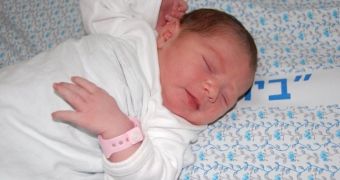A baby born with four arms and four legs in Guangzhou, in China's Guangdong province, underwent a complex surgery to have the extra limbs removed.
Fortunately, the complicated procedure was a success, and the newborn is now in stable condition at the Guangzhou Women and Children's Medical Center. The baby boy was born on April 2, and doctors were stunned to discover that a headless conjoined parasitic twin was attached to his torso.
They successfully removed the additional limbs on April 11 and explained that the baby actually had normal limbs, and the extra pair of arms and legs coming out from the right side of his body belonged to his twin who developed improperly in the womb.
“They were supposed to be twins, but one had underdeveloped and became deformed,” said Yu Jiakang, chief surgeon at Guangzhou Women and Children's Medical Center.
The infant's father, referred only as Mr. Chen, said his wife had undergone five routine examinations at local clinics and small hospitals during the pregnancy, but medics hadn't noticed anything abnormal.
According to the Mirror, the conjoined twins were born weighing just over 3kg (6.61lb) at a hospital in Huizhou city, and the removed parasitic fetus weighed 0.6kg (1.32lb).
The same source mentions that before surgery, the baby was diagnosed with pneumonia and congenital heart disease, which is common among children in China. His father blames himself for his son's condition, saying that he neglected his wife during pregnancy.
“I only cared about my work. I just thought of making money instead of taking her to hospital for a medical checkup,” he said.
Cases when babies are born with so many additional limbs are extremely rare. However, a similar case was recorded in Karachi, Pakistan two years ago, when a baby successfully underwent surgery to remove his 4 extra limbs.
Back then, a doctor at the National Institute of Child Health in Karachi said that the abnormal birth was the result of a genetic disease which affects only one in a million babies.
Conjoined twins are a very rare phenomenon, and its occurrence is estimated to range from 1 in 50,000 births to 1 in 200,000 births, with higher incidence in Southwest Asia and Africa. They form when a split egg fails to fully separate.
A parasitic conjoined twin can survive, but when one of the infants absorbs the other, that's practically impossible. Medics explain that removing a parasitic twin is usually easier than attempting to separate conjoined twins.

 14 DAY TRIAL //
14 DAY TRIAL //